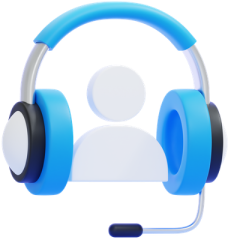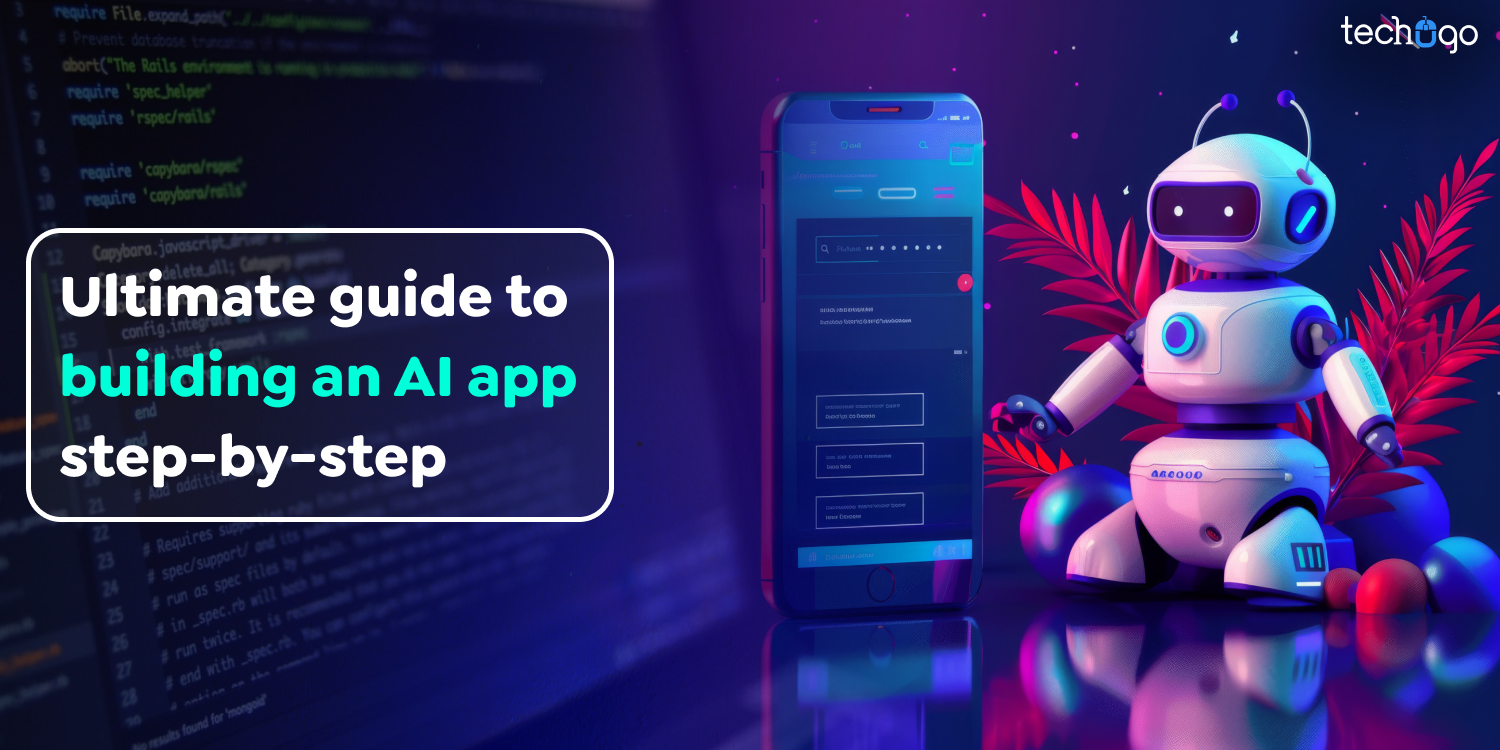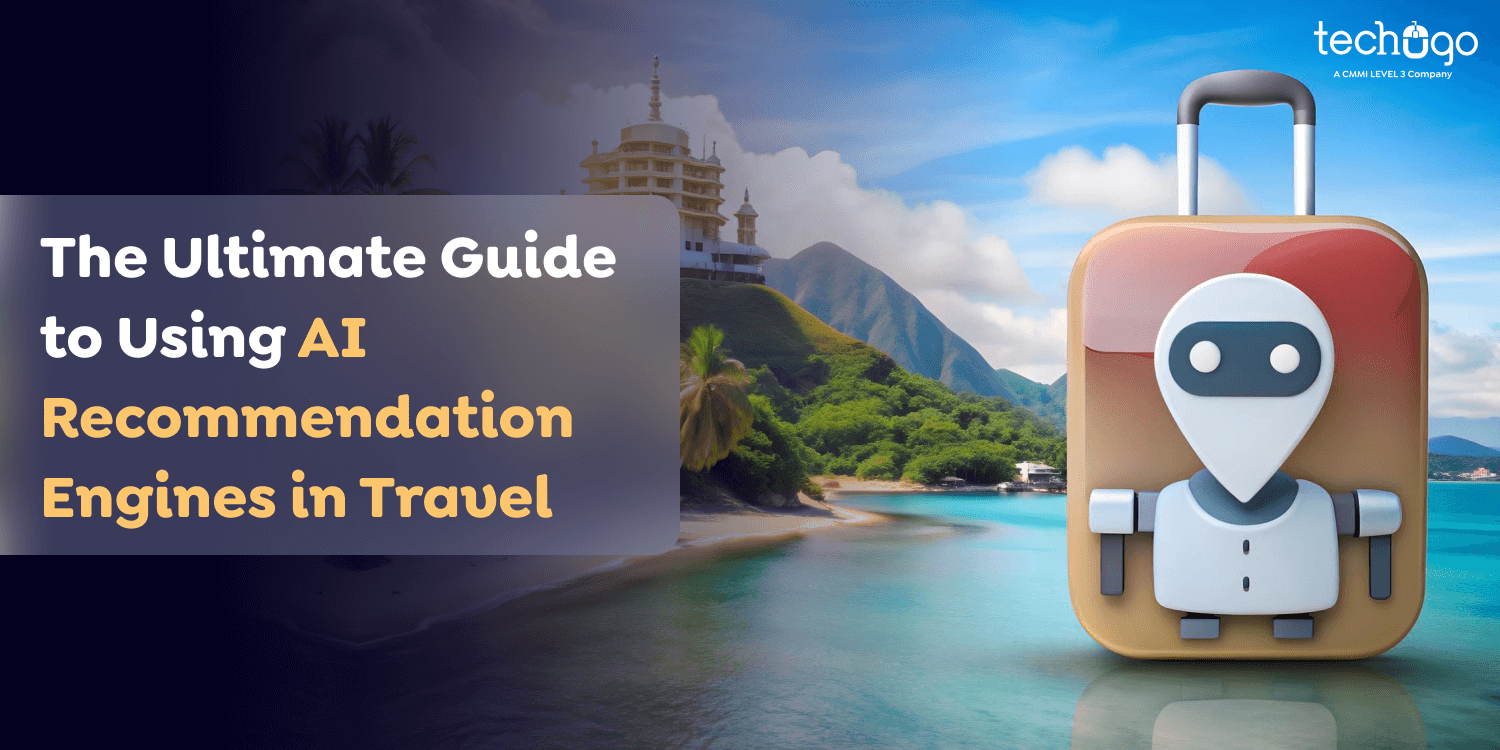28 Oct 2024
Updated on January 31st, 2025
Chatbot App Development: Bridging the Gap Between Businesses and Customers
Matthew Connor

Do you have a business idea in the eCommerce, banking, or hospitality sector and would like to improve your sales or increase your revenue? If so, building a chatbot app is the best option. The ability to communicate has been crucial to maintaining any personal or professional relationship. Chatbot app development is essential to keep the relationship you have with your clients. You can use it to boost, enhance, and perhaps most crucially to digitize your business.
The public is becoming more discerning in their communication with businesses. They are expecting ever-faster responses in real-time. Many companies have embraced basic AI strategies, typically as chatbots, to keep up with these changes.
Chatbot apps are another marvel of artificial intelligence that mimics the human voice, has transformed the customer experience, improved processes, and created potential for everybody. At the forefront of this technology revolution, chatbot develops a company that uses its creativity and knowledge to build stunning digital tools.
In this blog, we will discuss how to build a chatbot app.
What Is Chatbot App Development?

A chatbot application is a mobile app that uses AI and NLP to create human conversations and respond to queries. It’s an automated computer program that communicates with users in the same way that humans do. Chatbots offer solutions to challenges, respond to queries, and can operate in various ways to communicate with users and assist them.
Also, a chatbot is software that mimics human interactions to respond to client queries. Chatbots can welcome and assist leads and clients who reach out to us via any method. The chatbot can assist customers in submitting support inquiries by email or connecting with human agents when needed.
If you think this refers to an online customer support option where you could choose various options according to your company’s needs, then you’re right! The phone tree can also be an automated chatbot, but a fundamental one. Chatbots today achieve the same goal by interacting with clients.
Also Read : Unlocking Growth: The Importance of Choosing the Right Travel App Development Company
Benefits Of Using Chatbot For Your Business
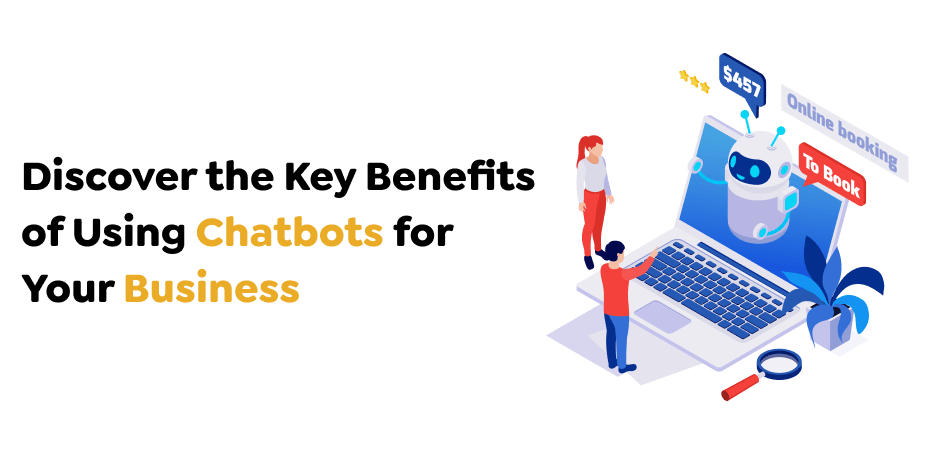
Chatbots enhance customer loyalty and increase trust in the brand. Chatbots help you achieve marketing objectives and improve customer service when integrated into your marketing strategy. Below are the advantages of using intelligent chatbots.
1. Increases Customer Engagement
Chatbots help businesses grow and increase customer satisfaction. Once instant information is provided, clients stay longer and continue the conversation. Because chatbots can respond in real-time, they can achieve the desired goal and also enhance the user experience for your company’s brand.
2. Improves Lead Generation
As conversational bots can provide personalized messages throughout the process, companies can quickly create leads and make informed business choices. Bots collect contact information, including name, company name, email address, and phone numbers. The bot automatically collects leads and then qualifies them.
3. Available 24*7
Chatbots are available around every hour of the day to provide help. Your customers are supported on weekends and even late into the night. In the event of an issue that the chatbot is unable to respond to, there’s an opportunity for users to be referred to an employee. In the absence of hours for service, it is possible to leave a message with customer service, and they will respond via email on the following working day.
4. Streamline Your Revenue
It is possible to automate the sales process by using Chatbot Software development. Chatbots can manage payment processing and guide customers through your sales funnel. Chatbots for your reps can also qualify leads. Once they have gone through an automated process, they decide on the most qualified leads for your representatives to follow up with.
5. Monitors Customer Data And Gain Insights
Chatbots are among the top tools to monitor buying patterns and analyze behavior. Data gathered through chatbots can help market products in a unique manner and increase customer reach. Bots can be used to push out notifications to customers who are already in your database and to interact with your customers.
6. Provides Scalability
The operator may focus only on a single customer at a given time and answer only one query. But a chatbot can respond to thousands of inquiries at once. So, it can manage spikes in traffic like the festive season or peak times without much cost.
7. Deeper Understanding Of Your Customer Base
Lack of data or insufficient information can differentiate between successful and unsuccessful companies. Understanding your ideal customers is among the most important factors for succeeding. Yet, most customers don’t wish to waste time addressing questions that benefit you.
Chatbots have the unique ability to conceal data collection as a pleasant conversation and offer precise and actionable data about customers’ problems and their preferences regarding products or services. The best part is that they can utilize this information in real-time and customize your experience on the spot.
Also Read : The Ultimate Guide to Location-Based App Development: Key Insights and Features
Types Of Chatbots
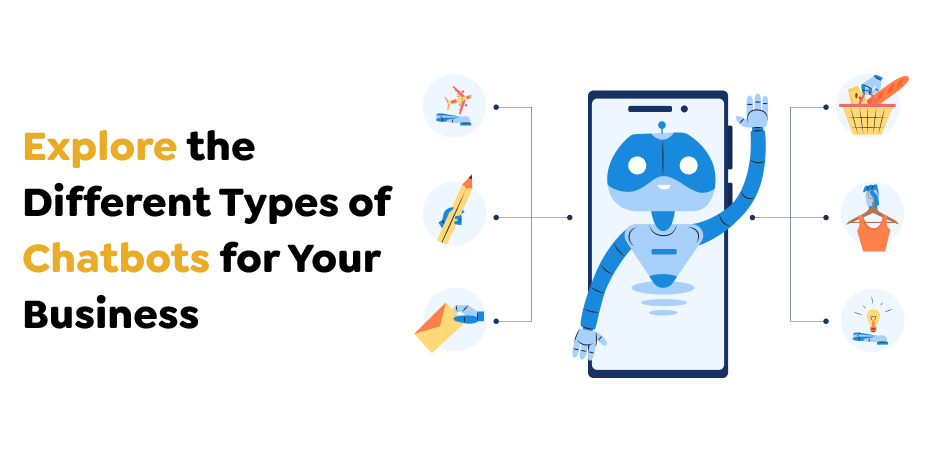
In the past, we’ve described what chatbots are and the reasons why companies should integrate chatbots into their platform. One example is that a chatbot created specifically for banks will not be appropriate for running an e-commerce company. It’s the same for other areas that require various needs and working methods. Look at the different kinds of chatbots; they will guide you in deciding which one to select for your company.
1. Linguistic Based Chatbots
Chatbots that are linguistic or based on rules create chat streams by relying on the event they can rationalize. At the beginning of the process, you must define the state of language your chatbots use.
The conditions are often referred to when analyzing the language, the need for responses, and the equivalents, but that’s only the start. Suppose an inquiry aligns with the parameters set by your chatbots. In that case, your clients will receive the right help immediately.
2. Basic Menu-Based Chatbots
Chatbots based on buttons and menus are the most basic kind currently in the market. Chatbots are generally regarded as choice tree chains that customers can use as bait. The goal of a button-based bot is to direct the user through a specified sequence of events. It is similar to IVR systems that use text. Like IVR, a button-based bot is identical to an IVR one that uses buttons to provide choices and request information.
Bots based on buttons work well to help with onboarding, surveys, sales support, and basically every other task that requires automation. They are perfect for tasks where communication scenarios are well-defined. After a couple of weeks or even months of operation, companies may want to add more scenarios for which a simple bot won’t be sufficient.
3. Keyword Acknowledgement Chatbots
The chatbots that recognize keywords and catchphrases will know what users compose and respond appropriately. Chatbots can use custom watchwords as well as AI software. They employ Natural Language Processing (NLP) to determine the appropriate response to a customer. Chatbots of this kind miss the mark when they must respond to similar questions. They will start falling off when catchy words are used in some related queries.
It’s standard to see chatbots with a menu or button-based acknowledgments hybrid based on watchwords. Chatbots allow users to ask questions or use the chatbot’s menu catch. You can determine if acknowledging a word results in no help or if the user needs guidance to find their solution.
4. Voice Chatbots
To make chatbots more recognizable, companies are experimenting with virtual chatbots based on voice, also called voice bots. Vocal bots have gained popularity in recent years. From Apple’s Siri to Amazon’s Alexa. Why is this? Answer: because of the convenience they provide. It’s much simpler for customers to communicate rather than type. Voice bots offer seamless interactions directly to the user.
Utilizing the most natural method of communication—voice—these designs will appeal to users and offer many benefits for organizations. For them to work effectively, each person in the organization requires an appropriate device. There aren’t many voice arrangement stages that support the entire creation process.
5. Contextual Chatbots
Have you ever thought about the definition of a context-specific chatbot? Contextual chatbots are by far the most remarkable of the three bots we have discussed previously. Chatbots of this kind utilize ML and AI to recall conversations with users to improve and learn over time. Contrary to keywords acknowledgement-based chatbots. Contextual chatbots can continuously improve. They depend on the item people want and how they request it.
Also Read : Quantum App Development: A New Frontier in Software Engineering
Key Features Of Chatbot App Development
In this section, we will examine the features that your chatbot app should have. So, let’s begin.
1. User Interface (UI) Design
The user interface is vital for a chatbot to be able to make a chat easy to use and enjoyable. To help users navigate conversations, an appropriately designed chatbot User Interface (UI) includes features such as chat bubbles, buttons, and quick responses. With the help of user interface design, the user can easily communicate with chatbots and receive responses in a clear and easy-to-read manner.
2. Contextual Knowledge
The bots that work well retain the entire conversation’s context intact. They customize their replies using the data gathered from previous messages. To ensure that they don’t need to make the same mistakes, contextual understanding is vital for a clear conversation that is human.
3. Human-Like Approach
One of the most notable features of a chatbot is its human-like design. Much like humans, who utilize conversational context in everyday routine, chatbots also utilize technology and data that make it simpler to comprehend the conversation.
4. Natural Language Processing (NLP)
The natural processing of language affects how people interact with your chatbot. NLP is among the essential aspects the chatbot must have because it cannot establish stronger connections with users if it isn’t NLP-enabled. Being able to communicate is the most critical characteristic. Still, there will be dependencies based on the level of power you wish the chatbot to become.
5. Gateway To Process Payments
Payment gateways are among the most important components in highly successful custom chatbot creation. These particular software applications have been designed to enable firms to communicate with customers interested in visiting their site when they decide to. Many industries are currently employing chatbot software to increase sales and grow the customers they serve.
6. Integration Capabilities
Chatbots are a great option for accessing data by asking simple questions. They could be integrated with other technology, such as CRMs. This method builds a bridge for users to connect and utilize the product.
Steps To Develop Chatbot Apps

When you develop a chatbot application, you should aim to make a significant return on investment from this conversation solution and increase participation. So, in this section, we will detail the steps necessary to help you create a top-quality chatbot application.
1. Define The Purpose Of Your Chatbot App
Before beginning to design the chatbot, you must determine its goal. What exactly is it supposed to accomplish? Do you want it to offer help to the customer, give suggestions, or complete duties on behalf of the users? Deciding the chatbot’s function is vital since it will help you select what features and functions you want to add.
2. Identify The Type Of Chatbot
When creating your chatbot, you must decide on the type to build. There are three kinds of chatbots: Rule-based bots are the easiest to develop and operate based on established guidelines. However, AI-powered chatbots employ the machine-learning (ML) algorithm to enhance their performance as time passes. Hybrid chatbots bring pre-defined rules to handle simple tasks and machine learning to handle more intricate ones.
3. Select a Channel
When you’ve settled on the kind of chatbot you’d like to create, you need to choose the medium through which the bot will interact with users. The most popular channels chatbots use are messaging platforms such as Facebook Messenger and WhatsApp. You can also embed your chatbot into your mobile application or website if you already have one.
4. Choose The Technology Stack
When you’ve selected a channel you want to use, choose the tech stack you will use to create your chatbot. The tech stack you choose will be based on the kind of chatbot you’re developing. Utilizing a programming language like Python is possible if you create the chatbot based on rules. If you’re creating an AI-powered chatbot, you’ll require the most sophisticated technology stack, including machine learning frameworks.
5. Design The Conversation
After you’ve set up your tech system, you can now plan the conversation flow that forms the basis for the chatbot. It decides how it communicates with its users and responds to inquiries. Conversations must be fluid and easy to understand, and the chatbot must handle various user queries. It is essential to sketch the user’s conversation before you begin coding to ensure your chatbot has the information users want.
6. Train The Chatbot
At this point, it’s time to educate the chatbot. It involves providing the bot with lots of information to assist it grow and improve its performance over time. If you’re developing an AI-powered chatbot, you’ll require machine learning software to help train the chatbot. It’s crucial to examine and monitor the bot’s performance and implement improvements if necessary.
7. Integrate The Chatbot With Your Mobile App
After you’ve trained your chatbot, it is time for the chatbot to integrate it into your created mobile app. Most chatbot development platforms offer an integration option for the most popular mobile app development platforms, such as Android and iOS. Using APIs to connect your chatbot to your mobile apps is also possible.
8. Try Out Your Chatbots
Make sure you test all the insides of the chatbot application once you’ve designed the app. That’s what we’re talking about. Review the content and pictures you plan to incorporate into the chatbot. For analysis and to resonate with users on your website. It is possible to test A/B to guarantee a seamless chatbot procedure flow.
Also, you can try making the chatbot in a clone, after which you can change the design. This way, spending as much for the end product is unnecessary. Creating tags for users and monitoring your chatbots’ performance is also possible. Selecting chatbot templates or designs you have made will give you an idea of how the process works.
9. Improve By Incorporating Feedback
It’s a good thing you successfully create an enjoyable and friendly chatbot. But wait a second. You’ll learn a lot once your chatbot can pass all essential tests. Furthermore, beta testing lets users fix any issues before releasing. Do not think that the process of testing ends there. Involve your customers in the design and testing phase also.
Maintain a record of the feedback received, analysis of performance and workload tests, etc. Because you have the full cohesion of the chatbot, you created it by doing this. Find out how quickly it responds to user queries, the parameters it uses in its response, and more. Get help by contacting chatbot development experts to get more information.
Also Read : How Progressive Web App Development is Transforming Canada’s Digital Landscape
Chatbot Development Tools
Below are the most popular chatbot app development tools to pick from.
1. Google Dialogflow
It is the top chatbot development platform that effortlessly supports app development company in Canada. This allows them to quickly design, modify, and implement the slick design and user interface. It is among the most well-known options that support over 20 NLP.
Dialogflow is a significant engine behind well-known platforms like Facebook, Twitter, etc. If you’re looking for an all-channel chatbot that can answer users’ questions quickly, this is the bot for you. Additionally, the cognitive capabilities of the bot could attract new users.
2. Amazon Lex
Using these omnichannel chatbots that support Q&A, you can easily create chatbots. They’re built on NLP, which allows for simple text-to-speech recognition and a more engaging interaction. Amazon Lex is fully packed with sophisticated ML algorithms to help developers create interactive bots. Therefore, these kinds of programs help add automation to boost the firm’s efficiency.
3. IBM Watson
As one of the most reputed bigwigs, the chatbot also assists in apps for companies. This helps you provide services across all verticals and with excellent efficiency. Begin with the basics and identify the key requirements for the bots. We’ll discuss why you need the bot and its purpose.
It is essential to determine the purpose and identities of the individuals involved. It is easy to create a list of goals for the chatbot’s goals. The chatbot will then be further analyzed to verify how it works and to test the interactions.
4. Microsoft Bot Framework
Azure is a comprehensive chatbot-building tool that provides brands with an interactive experience. It lets you build your chatbot and turns your company into a name! The chatbot comes with an open-source SDK and other valuable tools. Therefore, developers and designers won’t be stuck at any point in the development or test process.
Also Read : Transform Financial Services with Custom Loan Lending App Development
Tips To Develop The Most Ideal Chatbot For Your Business

Once the technicalities of developing chatbots are done, we can look into the motivations behind the concept. The entire effort you put into developing your chatbots will be wasted if you do not adhere to specific factors that significantly impact their performance. One mistake or a misplaced goal or concept can negatively impact customers’ experience and derail every effort.
To prevent such a scenario, we’ll look into how you can create a profitable chatbot.
1. Set The Right Goals
Don’t get caught up in the hype about setting up chatbots. You must know if you genuinely need one. Think about why you need chatbots, and then consider what changes or results you expect when they are implemented.
2. Who Is Your Audience?
Knowing the demographics of your customers and their needs is crucial to creating excellent chatbots. The chatbot you create can perform the most complicated tasks; however, it’s useless if it can’t present your information so the users can understand.
A chatbot that older people use must be distinct from those used by the millennials. In the same way, chatbots for fintech should be different from chatbots for healthcare. All it comes down to is whom you are using the chatbot.
3. Understand the Context
Suppose we asked you to describe what you’re doing in ten ways. Being a human, you know each method and react accordingly. The chatbot you choose to use ought to be able to handle this, too. Not every person asks an exact inquiry. Some questions could be raw and contain only keywords. Others may be particular, while others may have grammar issues, and others may be prone to pronunciation issues,
Your chatbot must be able to meet the needs of all and act appropriately. This is why you should create conversations that don’t blindly apply directives but instead recognize the context and significance behind them.
4. The Right Platform
It is now clear that many types of chatbots and publishing platforms exist. You must deploy the right one for your organization and intended audience. Suppose you are planning to make your business chatbots accessible to customers. In that case, they should expect it to be accessible to customers on their platforms, such as Facebook Messenger, Skype, or many more.
5. Conversation Flow
Your chatbot is not as ambiguous as the human asking the questions. The chatbot should be built to provide precise and detailed answers. So, your conversation flow is based on this idea. If someone asks about the current weather conditions in Canada, the chatbot should be able to provide a clear answer. It must explain the weather, whether it’s predicted to shower if you’re carrying some kind of item, and so on.
6. Constant Learning
The most effective chatbots take lessons from the interaction. Your bot should comprehend humans through each interaction. It should be able to understand the pronunciations of users, their linguistics, preferences, tastes, and many other factors to deliver optimized interactions. As it grows more, the conversations will be better. It can only happen in time, however. Chatbots like Alexa and Siri improve with time if you observe.
7. Repeated Testing
As developers, you’re creating something unbelievable. What you are creating is something that most people can’t even think of. The concept is still unimaginative to most people, so it is vital to test your chatbot repeatedly. It is essential to keep testing your chatbot’s performance and evaluate it in various contexts and conditions.
The testing should focus on linguistics, response times to retrieve time, natural language processing, and much more to ensure that your bots can give accurate and fast outcomes. A flaw in your bot will not just affect the trust of your company but also cause users to be skeptical about one of the more complex technological concepts in the world today.
Final Thoughts
Creating a chatbot application could significantly improve customer interaction by providing an efficient and personalized service. To create a successful chatbot, you must define its goal, determine its type, and make a simple chat process to comprehend and operate. Furthermore, it’s essential to regularly test the chatbot’s effectiveness and meet the demands of users. Through careful planning and implementation, adding a chatbot to your mobile app could prove beneficial, increasing user involvement and satisfaction.
Chatbot has been growing in popularity, and the launch of a mobile chatbot app is a business with a high ROI idea. Chatbot app development isn’t as simple as it seems. Because there are many steps beyond the technical aspects of designing and design, the steps above can help you navigate each stage easily. Moreover, it’s best to hire a chatbot app development company like Techugo.
Get in touch with us today to discover how chatbot app development can elevate your business and enhance customer interactions!
Get In touch
We are excited to here from you and let’s start something special Together. Call Us for any inquiry.
Write us
sales@techugo.caJust a call away
About you
